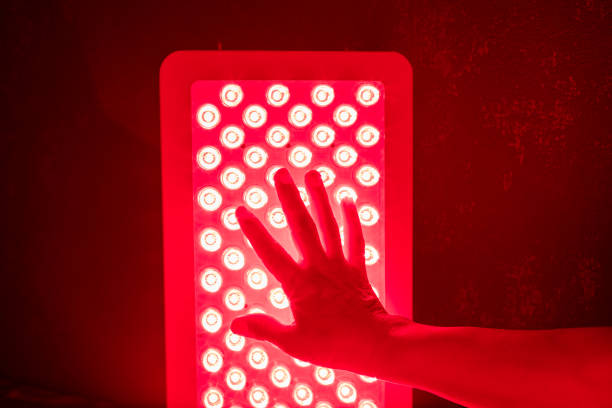How Some Explore Red Light Therapy for Skin and Recovery
Red light therapy has emerged as a popular wellness trend, with many individuals incorporating specialized sunlight lamps into their daily routines. This therapeutic approach uses specific wavelengths of red and near-infrared light, typically between 660-850 nanometers, to potentially stimulate cellular processes. While research continues to evolve, people worldwide are experimenting with these devices in hopes of supporting their skin health and recovery goals.

Exploring How Red Light Therapy May Support Skin Wellness
The growing interest in red light therapy for skin wellness stems from its potential to influence cellular energy production. Many users report incorporating red light sessions into their skincare routines, typically spending 10-20 minutes exposed to the specialized lighting. The therapy works by delivering specific wavelengths that may penetrate the skin’s surface layers.
Some individuals explore red light therapy as a complement to their existing skincare regimens, particularly those dealing with aging concerns or seeking to maintain healthy-looking skin. The non-invasive nature of the treatment appeals to people who prefer gentle approaches to skin wellness. However, results can vary significantly between individuals, and consistency appears to play a crucial role in any potential benefits.
Professional dermatologists and aestheticians have noted increased client interest in red light therapy options, though they emphasize the importance of realistic expectations and proper usage protocols.
Potential Uses of Red Light Therapy in Home Settings
Home-based red light therapy devices have become increasingly accessible, ranging from handheld units to full-body panels. Many users appreciate the convenience of incorporating treatments into their daily routines without scheduling appointments or traveling to specialized facilities.
Common home applications include targeted facial treatments, where users position smaller devices near their face for specific timeframes. Others invest in larger panel systems for full-body exposure, often using them while reading, meditating, or performing other quiet activities.
The appeal of home settings lies in privacy and consistency. Users can maintain regular treatment schedules and create comfortable environments that support relaxation during sessions. However, the quality and effectiveness of home devices can vary considerably, making research and proper selection crucial for those considering this investment.
What to Know Before Considering Red Light Therapy in 2025
Before investing in red light therapy equipment, several factors warrant careful consideration. The wavelength specifications of devices matter significantly, as different wavelengths may produce varying effects. Quality devices typically offer specific wavelength ranges and provide clear specifications about their light output.
Time commitment represents another important consideration. Most protocols suggest daily sessions ranging from 10-30 minutes, requiring consistent dedication to potentially see results. Some users find this routine meditative and relaxing, while others struggle with the time commitment.
Eye protection during treatment sessions is essential, as direct exposure to intense light can be harmful. Reputable manufacturers include protective eyewear or specific usage guidelines to ensure safe application.
Individual skin sensitivity varies, and some people may experience initial redness or irritation. Starting with shorter exposure times and gradually increasing duration often helps minimize potential discomfort.
| Device Type | Provider | Price Range | Key Features |
|---|---|---|---|
| Handheld Panel | Red Light Rising | $150-$300 | Portable, targeted treatment, 660nm/850nm |
| Desktop Panel | Joovv Mini | $400-$600 | Mid-size coverage, medical-grade LEDs |
| Full Body Panel | PlatinumLED | $800-$1,500 | Large treatment area, multiple wavelengths |
| Light Therapy Mask | CurrentBody | $300-$500 | Face-specific, hands-free design |
Prices, rates, or cost estimates mentioned in this article are based on the latest available information but may change over time. Independent research is advised before making financial decisions.
The investment in red light therapy equipment varies significantly based on device size, quality, and intended use. Entry-level handheld devices typically start around $100-$200, while professional-grade full-body panels can exceed $1,000. Many users begin with smaller, more affordable options to test their response before upgrading to larger systems.
Quality considerations often justify higher price points, as medical-grade LEDs and precise wavelength control require sophisticated manufacturing processes. Some manufacturers offer financing options or bundle packages that include accessories and extended warranties.
When evaluating costs, many users calculate the long-term value compared to professional treatments, which can range from $50-$150 per session at specialized facilities. Home devices may represent more economical options for consistent, long-term use.
Safety Considerations and Realistic Expectations
Understanding proper usage protocols helps ensure safe and effective red light therapy experiences. Most devices include specific guidelines regarding distance, duration, and frequency of use. Following manufacturer recommendations closely reduces the risk of overexposure or adverse effects.
Realistic expectations play a crucial role in satisfaction with red light therapy. While some users report noticeable improvements in skin appearance and recovery times, results typically develop gradually over weeks or months of consistent use. Individual responses vary based on factors including age, skin type, overall health, and adherence to treatment protocols.
Those with specific medical conditions or taking photosensitizing medications should consult healthcare providers before beginning red light therapy. Pregnant women and individuals with certain eye conditions may need to avoid or modify treatment approaches.
Red light therapy continues attracting interest as a non-invasive wellness option, though individual experiences vary considerably. Those considering this approach benefit from thorough research, realistic expectations, and attention to safety protocols. As with any wellness investment, consulting with healthcare professionals can provide valuable guidance for incorporating red light therapy into personal care routines.
This article is for informational purposes only and should not be considered medical advice. Please consult a qualified healthcare professional for personalized guidance and treatment.




